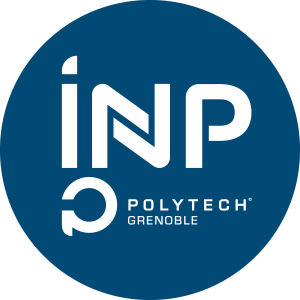Number of hours
- Lectures 8.0
- Projects -
- Tutorials -
- Internship -
- Laboratory works -
- Written tests -
ECTS
ECTS 0.0
Goal(s)
This course will cover cement and concrete materials (Introduction to cementitious materials: Manufacture and use of cement and concrete). This course is given by industrial partners.
Content(s)
Cement courses by engineers from LAFARGE
- Part 1: Cement History and Manufacturing (Alexander PISCH)
- Part 2: History, manufacture and use of concrete (Blandine ALBERT)
- Part 3: (Matthieu Horgnies)
A: Surface reactivity & functionalization of building materials (2h)
Plan
1. Introduction
- Some definitions
- The colour of the concrete
2. Characterize material surfaces
- Variability of surface composition
- Interface characterization and adhesion study
3. Functionalize building materials
- (Super)-hydrophobic/hydrophilic functions
- Anchoring of pigments on the surface of concrete
- Parameters influencing biological colonization
4. Innovating: towards new materials and concepts
- Air pollution control by concrete with activated carbon
- Incorporation of aggregates based on recycled materials
- Deposition of photovoltaic thin films
5. Conclusions: assessment, technological bottlenecks & prospects
B: Some areas of innovation in building materials (and examples of applications for renewable energies) (2h)
Plan
1. Some areas of innovation in building materials (cement-based)
- Reduce construction costs
- Improving energy efficiency
- Reduce the environmental footprint
- Improve aesthetics
- Prepare for the digitalization of work
- Developing new solutions in energy
2. Example 1: Study of a new process for integrating photovoltaics into the facades of buildings
- Introduction: Urban development and energy
- Comparison between the main types of PV cells
- Building Integrated Photovoltaics (BIPV)
- Description of a new system for integrating PV into concrete
- Summary of characterization tests conducted in the laboratory
- 1st industrialization tests (video)
3. Ex. 2 : Study of a thermochemical heat storage system in the building
- Storage to solve the seasonal shift induced by renewable energies
- Different types of energy storage
- State of the art - From cement to ettringite
- State of the art - Storage of ettringite-based energy
- Thermo-energy models: description of the storage model
- Simulation of the temperature evolution of "ettringite concrete" during the cycles
- Conclusions and perspectives
QUIT
The course exists in the following branches:
- Curriculum - MAT - Semester 9
Course ID : KAMA9M21
Course language(s): 
You can find this course among all other courses.
- Arroyo R., Horgnies M., Junco C., Rodriguez A., Calderon V., Lightweight structural eco-mortars made with polyurethane wastes and non-ionic surfactants, Construction & Building Materials, 197 (2019) p. 157.
- De Larrard F., Concrete mixture proportioning, E & FN Spon, London, United Kingdom, 1999.
- Taylor H.F.W., Cement Chemistry, Second Ed., Thomas Telford Publishing, London, 1997.
- Dutruel F., Guyader R. - Considération sur les efflorescences des bétons apparents. Revue des matériaux de construction, 709 (1977) p. 3.
- Martin M., Etude de la texture de la surface coffrée des parements verticaux en béton, Thèse de doctorat, Université de Cergy-Pontoise (France) et Université de Laval (Canada), 2007.
- Libessart L., Influence de la composition des agents de démoulage à l?interface coffrage/béton - Impact sur l?esthétique des parements en béton, Thèse de doctorat, Université d?Artois (France), 2006.
- Horgnies M., Dubois-Brugger I., Gartner E.M. - NOx de-pollution by hardened concrete and the influence of activated charcoal additions, Cement and Concrete Research, 42 (2012) p. 1348.
- Barberousse H., Etude de la diversité des algues et des cyanobactéries colonisant les revêtements de façade en France et recherche des facteurs favorisant leur implantation. Thèse de doctorat, Musée National d?Histoire Naturelle, Paris (France), 2006.
- Beedens A., Van Gemert D. Experimental investigation of efficiency of TiO2-cement coating for self-cleaning and air-purification. Cement and Concrete Research, 34 (2004) p. 2223.
- Horgnies M., Tribologie des bétons à ultra-haute Performance - Propriétés de surface et revêtements de protection, Technique de l?Ingénieur, [TRI4600], 2012.
- Curtius, H.C., The adoption of building-integrated photovoltaics: barriers and facilitators. Renewable Energy, 126, p. 783 (2018).
- Ceron, I., Caamaño-Martin, E. & Neila, F.J., « State of art » of building integrated photovoltaic products. Renewable Energy, 58, p. 127 (2013).
- Cronemberger, J., Almagro Corpas, M., Ceron, I., Caamaño-Martin, E. & Vega Sanchez, S., BIPV technology application: highlighting advances, tendencies and solutions through solar Decathlon Europe houses. Energy and Buildings, 83, pp. 44 (2014).
- Polo Lopez, C., Frontini, F., Bonomo, P. & Scognamiglio, A., PV and façade fystems for the building skin. Analysis of design effectiveness and technological features. Proceedings of the 29th European Photovoltaic Solar Energy Conference and Exhibition, Amsterdam, 2014.
- Horgnies, M., Legrand, F., Bonnet, E. & Dubois-Brugger, I., Study of the interface and durability of the adhesion between photovoltaic cells and concrete-based façade panels, WIT Transactions on Engineering Sciences: Materials and Contact Characterisation VIII, WIT Press, 116, p. 171 (2017).
- K. Johannes, F. Kuznik, J.-L. Hubert, F. Durier, C. Obrecht, Design and characterisation of a high powered energy dense zeolite thermal energy storage system for buildings, Applied Energy, 159 (2015).



